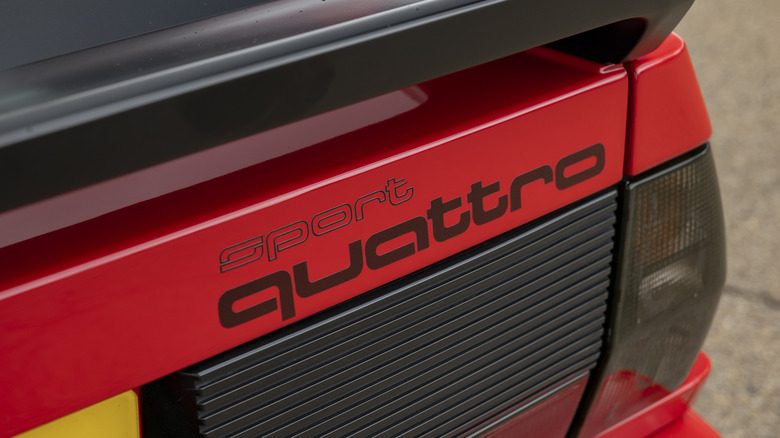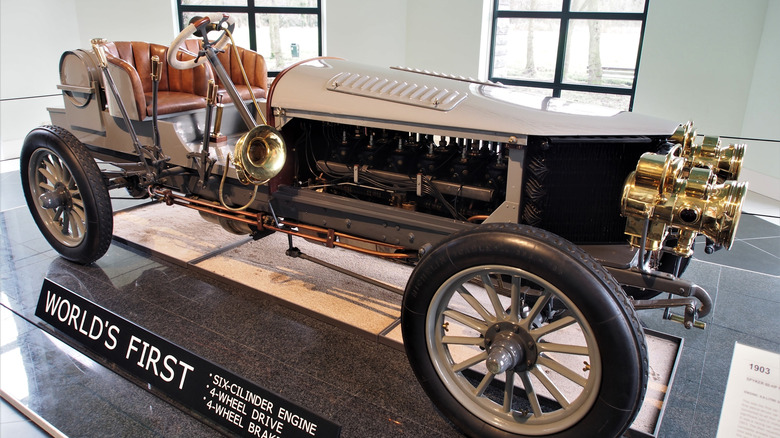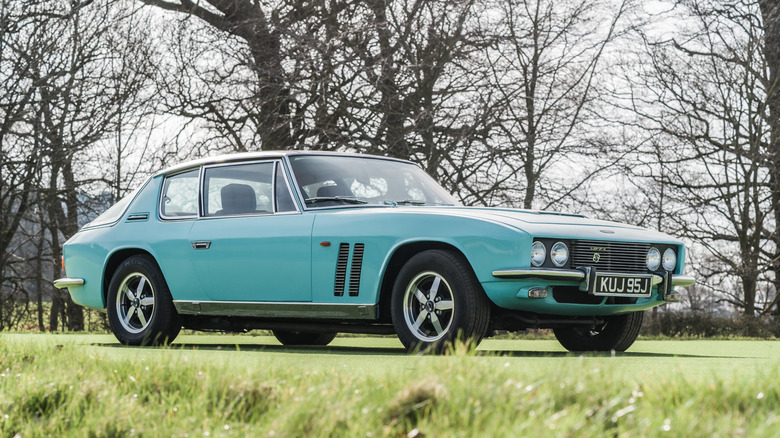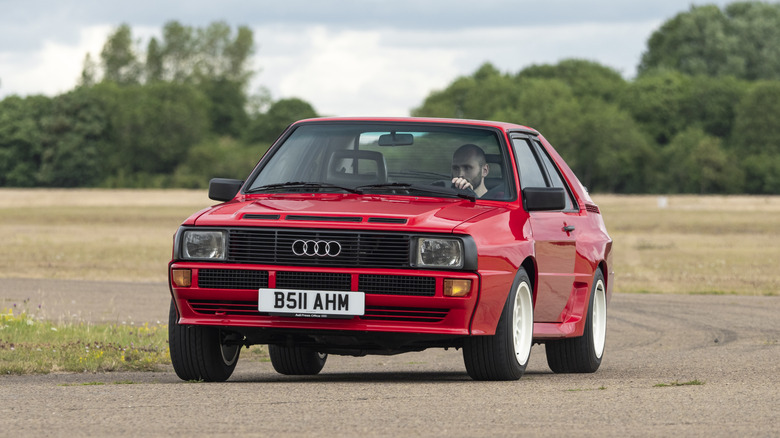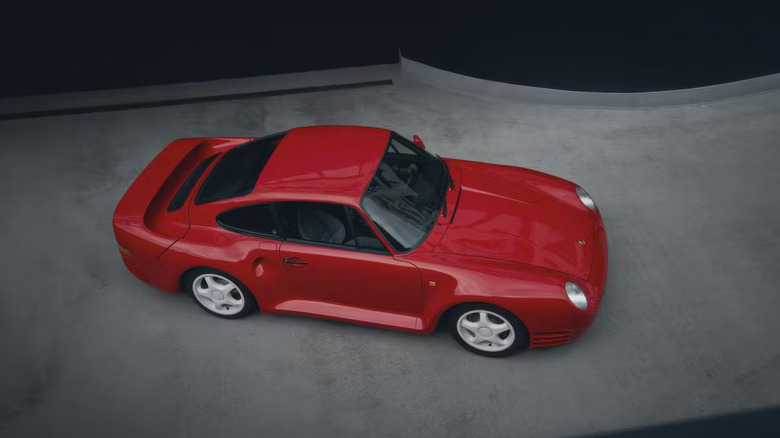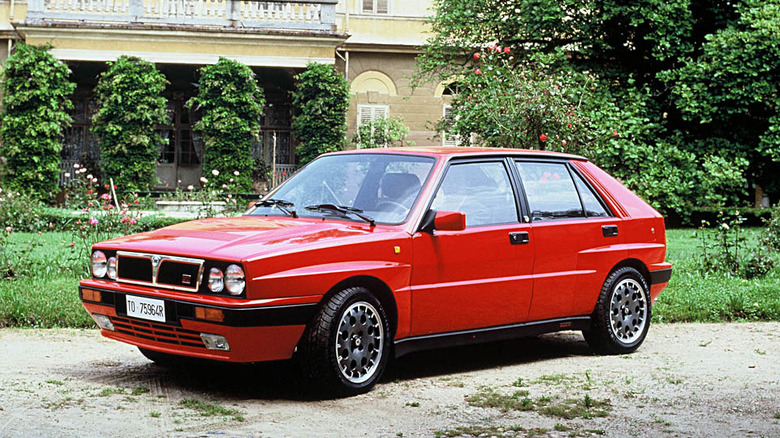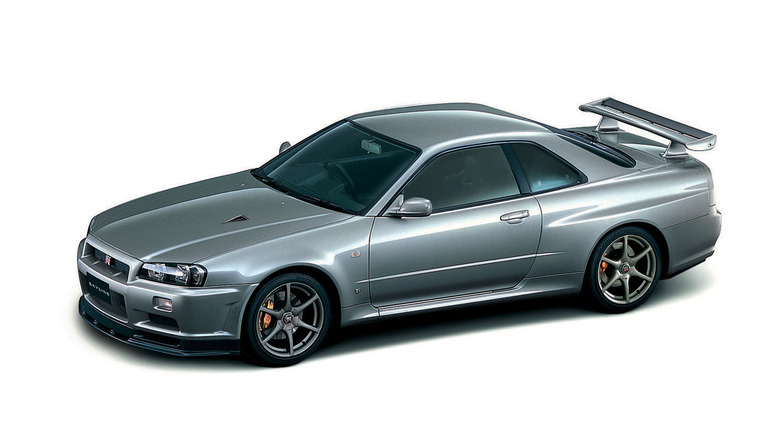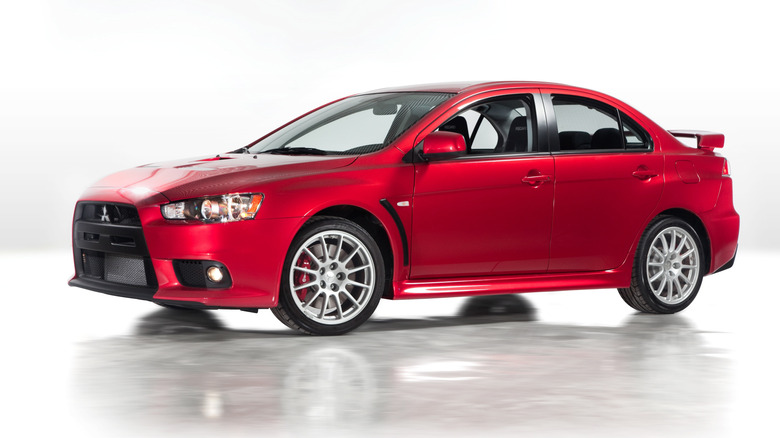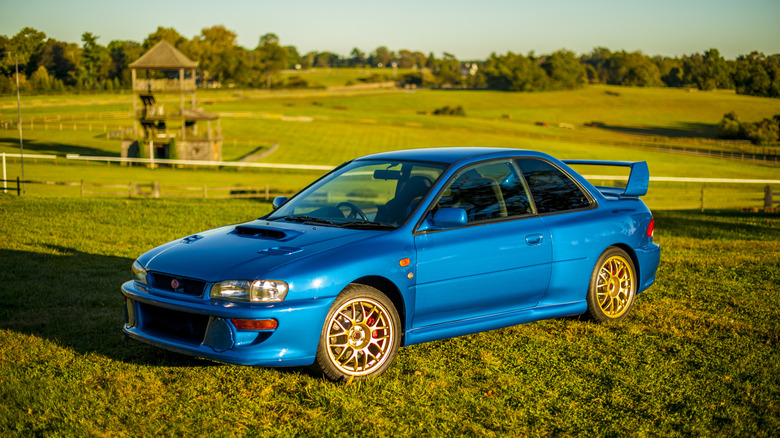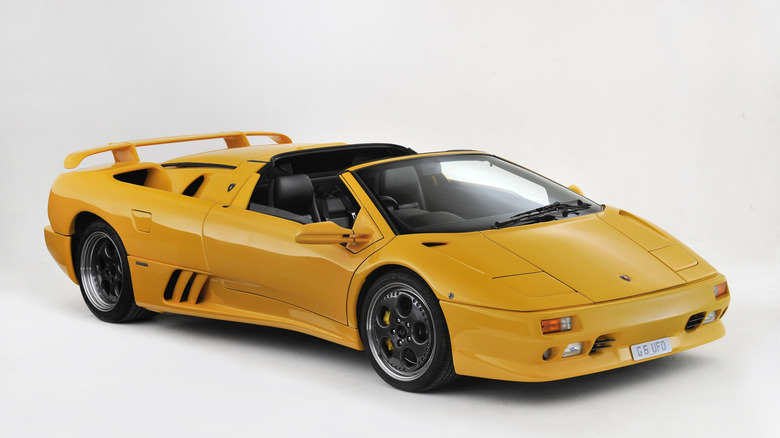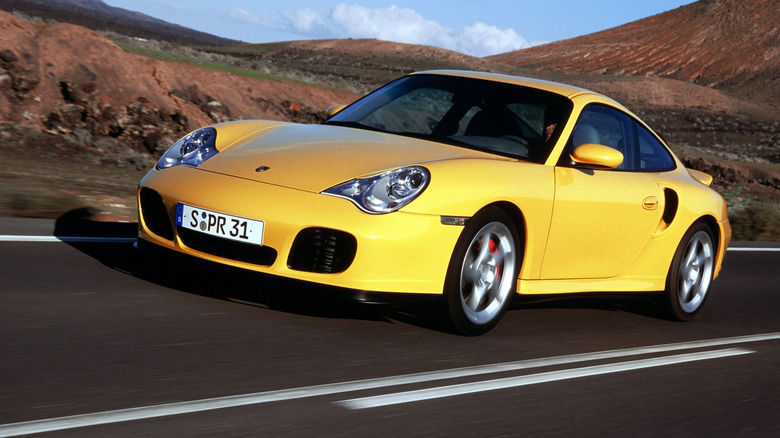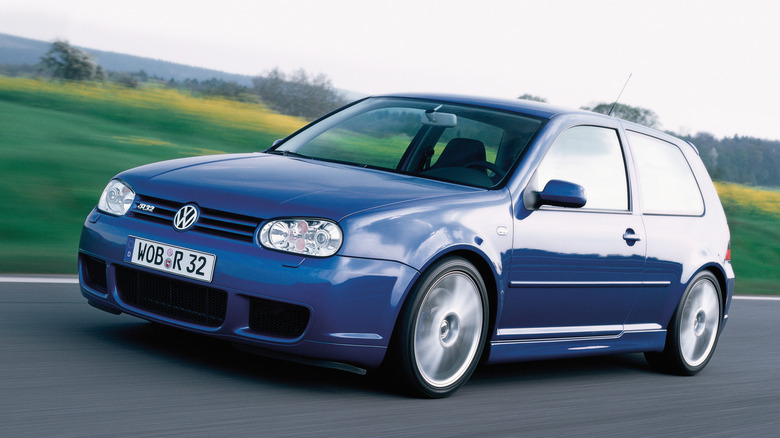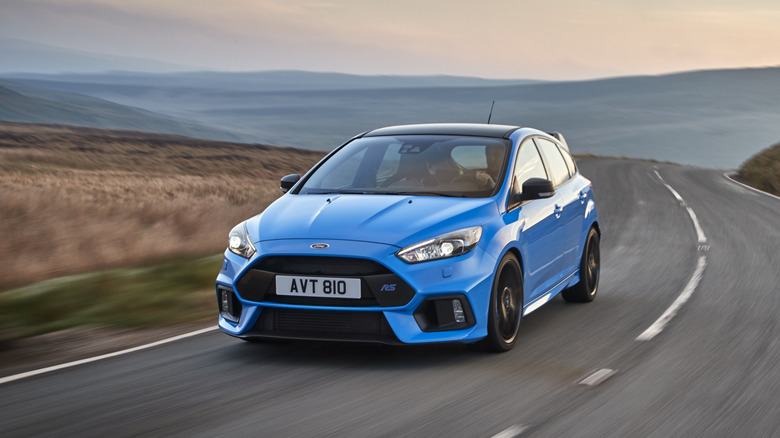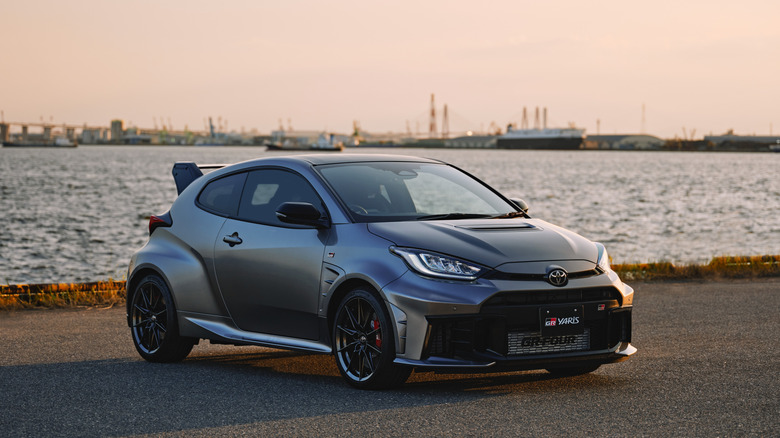13 Most Influential Four-Wheel-Drive Sports Cars Ever Made
Four-wheel drive was initially used in utilitarian and military vehicles, for an obvious reason: it provided more traction on slippery terrain. But automakers shove 4WD/AWD in all sorts of vehicles today, including performance vehicles. Yes, you'll immediately think of cars like the Toyota GR Corolla and Volkswagen Golf R, but the truth is — AWD is more common in sports cars today than front-wheel drive or rear-wheel drive.
Don't believe us? BMW's popular M3 and M4 nameplates are offered with AWD. Merc's competitor, the C63 AMG — also AWD. Even Ferrari, which has almost exclusively built rear-wheel-drive supercars in the past, has produced AWD models recently. SF90. 849 Testarossa. Purosangue. Okay, the last one is a V12-powered quasi-SUV, but it proves the point, nonetheless.
Still, this trend hasn't just emerged from nowhere. The AWD sports car sauce has been simmering for quite a while and has been supplemented with some extraordinary cars in the process. So let's have a chronological look at the most influential ones, which led to the emergence of the category.
Spyker 60 HP (1903)
That's right. The first AWD car isn't an SUV, but a performance-built machine that dates back to the dawn of the automotive industry. Built by Dutch automaker Spyker, which still builds sports cars to this day, the 60 HP was one of the most revolutionary cars in its era. Yes, the pioneering 4WD drivetrain was the main attraction, but the 60 HP was also the first car with a six-cylinder engine. It also transmission brake, it could also decelerate all four wheels — a first for a gas-driven vehicle.
The Spyker 60 HP was built to compete at the Paris-to-Madrid road race, one of the most popular racing events in its era. To beat its rivals, Spyker got help from promising Belgian engineer Joseph Valentin Laviolette, who decided to build the most unique sports car on the grid. The 60 HP had a massive 8.7-liter inline-6 engine, which, you guessed it, produced 60 hp. Of course, the 60 HP was built on a ladder chassis, and clearly has an SUV-like ground clearance. Still, this was a limitation of all cars at the start of the 20th century.
Unfortunately, Spyker couldn't finish the 60 HP on time to enter the Paris-to-Madrid race. However, it placed third at the 1904 Blackpool races and also entered the Birmingham hill-climb event in 1906 and 1907 Beijing-Paris road race, where it finished seventh. Curiously, the single 60 HP Spyker produced has survived to this day, reminding everyone of who invented the four-wheel-drive sports car.
Jensen FF (1966-1971)
Much like the Spyker 60 HP, the Jensen FF wasn't very successful, at least in terms of sales. However, it has been very influential in the automotive industry. The FF was the first modern performance vehicle with AWD, but also revolutionized automotive safety forever by being the first car with ABS.
These are quite the credentials for a muscle car that most people have never heard about. A muscle car? Yup, Jensen Motors focused on building muscle cars — with American V8s, nonetheless. Notably, the FF was equipped with a Chrysler-sourced 6.3-liter V8, good for meaty 330 hp and 425 lb-ft of torque. Sadly, the engine was mated to a three-speed automatic. Still, the combo was potent enough for a 0-60 time of 7.7 seconds and a 131-mph top speed.
But of course, you want to hear about the AWD system. Designed by Ferguson Formula (hence the name), the system used one central differential that distributed the torque to both axles. Unlike other 4WD systems of its time, though, this one had clutches that allowed a 37:63 (front-to-rear) torque split for better driving dynamics. It was so good, in fact, that Audi's engineers studied the system when developing the Quattro AWD system that went on to become the most iconic rally car of all time, winning 23 individual championship events.
Audi Ur-Quattro/Sport Quattro (1980-1991)
To say that the Audi Quattro is influential in the automotive world would be an understatement. This boxy-looking sports car not only brought four-wheel-drive sports cars to the limelight, but it defined Audi as a brand going forward. Oh, and it has forever changed the world of rallying — 4WD is standard in today's WRC.
Because rallying at the highest stage required a road-going, homologation vehicle, the public also got to experience the Quattro magic first-hand. The first-gen model, called the Ur-Quattro, had a 2.1-liter turbocharged five-cylinder that produced 197 hp. Not bad for the 1980s, especially because the Ur-Quattro weighed reasonable 3,000 pounds. Using that AWD traction, Audi's icon sprinted to 60 in just 7 seconds. By the end of Quattro's lifespan, Audi upgraded the Quattro to a 20-valve 2.2-liter engine which produced 217 hp. This brought the 0-60 time to around 6 seconds — an excellent figure for the era.
However, the crazy Sport Quattro model truly captured the essence of what the Torsen-based AWD system was truly capable of. Based on the upgraded second-gen rally contender, the Sport Quattro had a 12.6-inch shorter wheelbase and staggering 9-inch wider track. The proportions seemed almost too aggressive, but they helped Audi shed 200 pounds, aided by the extensive use of Kevlar and fiberglass. Audi also turned the turbocharged five-cylinder into a powerhouse; inside the Quattro, it produced 302 hp and 258 lb-ft of torque. As a result, the Sport Quattro sprinted to 60 in just 4.5 seconds!
Porsche 959 (1986-1993)
The Porsche 959 might not be as popular as Audi's Quattro, but it's the first-ever 4WD supercar, so it's quite an important milestone in the 4WD sports car story. Crucially, though, the 959 was sort of a test bed that Porsche used to showcase its engineering prowess.
We'll start with the sauciest part: the powertrain. Borrowed from the famous 911 Moby Dick endurance racecar, the 2.85-liter, twin-turbocharged flat-six had a water-cooled head and air-cooled block, making it a unicorn among other supercars. More importantly, it produced 450 hp and 369 lb-ft of torque — an astonishing figure considering the small capacity. As a result, the Porsche 959 was stupendously fast, reaching 62 mph in just 3.7 seconds, and a top speed of a whopping 199 mph. In 1986, these numbers were just out of this world.
Still, the part where the 959 truly set itself apart was the AWD system, which could vary the torque split between 40:60 and 20:80 (front-to-rear) for maximum traction. This made it way easier for the driver to experience the car's outstanding performance in a comfortable manner, regardless of the weather conditions.
But Porsche went even further and equipped the 959 with an advanced suspension with adjustable ride height to maximize comfort, while using Kevlar reinforced glass fiber in the body and magnesium wheels to minimize weight. Heck, the 959 even ran on special Bridgestone RE71 NO run-flat tires and had a tire-pressure monitoring system.
Lancia Delta HF Integrale (1986-1995)
If anyone doubted the advantages of 4WD in rallying, the Delta HF Integrale victoriously eliminated them. Lancia had already competed with a 4WD rally machine — the S4 Stradale — but it didn't have much to do with the brand's street cars. Using the same 4WD system, the Delta HF 4WD won the championship in its first season, with the improved HF Integrale model continuing the domination for five more years.
But of course, it's the road-going homologation special that turned the nameplate into a legend. 2.0-liter, 16-valve turbo-four. 200 hp. Five-speed manual. Permanent AWD with a slight rear bias. One of the best-looking hatchbacks ever designed, enhanced with an aggressive widebody kit. All with unmatched rally success to back up its credentials.
All that was enough to bring enthusiasts in Lancia showrooms, but the Italian brand wasn't done. In 1993, the automaker introduced the Delta HF Integrale Evoluzione II, which produced 215 hp and 231 lb-ft. As a result, it sprinted to 60 in just 6.4 seconds, and had a top speed of 140 mph. Crucially, the Evo II had a smaller turbocharger, which resulted in less turbo lag. Yet the Delta HF Integrale wasn't only a straight-line demon — it handled corners with poise and stability while remaining compliant over bumps.
Nissan Skyline GT-R R32/R33/R34/R35 (1989-2024)
While European automakers worked on their four-wheel-drive rally beasts, Nissan was developing a 4WD sports car to compete in the Japanese Touring Car Championship. The drivetrain has also showed its supremacy in this racing series; Nissan won an astonishing 200 races and five championships with the R32 Skyline GT-R and continued to dominate with the subsequent R33 and R34.
The recipe for all these cars was similar. An intelligent, electronically controlled AWD. Hicas four-wheel steering. The legendary RB26DETT twin-turbo inline-6 with 276 hp and strong, tuning-ready parts. Of course, these were improved with each iteration, but the core principles stayed the same, resulting in cars that could compete with most supercars of the era. The last R34 model, for instance, sprinted to 60 in just 4.8 seconds and had a 165-mph top speed. And thanks to their AWD systems, Skyline GT-Rs were fast in the corners, too.
For the R35 GT-R, Nissan went with a new VR38DETT, 3.8-liter twin-turbo V6 engine with 480 hp but deleted the Hicas four-wheel steering and opted for a dual-clutch transmission. However, it had the most advanced 4WD system to date — the first one globally with an independent transaxle. It performed so well, that it was quickly termed the supercar killer. Straight line. Corners. You name it, the R35 can compete with any car — even today! Notably, the last, 2024 model had 565 hp and sprinted to 60 in just 2.9 seconds.
Mitsubishi Lancer Evolution (1992-2016)
Mitsubishi was one of the first Japanese automakers to embrace 4WD in rallying with the Galant VR-4. Powered by the legendary 4G63, 2.0-liter turbo-four engine, AWD, and all-wheel steering, the Galant VR-4 has set the stage for the Lancer Evolution — one of the most popular rally homologation specials.
Spanning 10 iterations, the Lancer Evolution showed that a compact sedan with a hi-tech AWD system could outrun significantly more expensive sports cars. Heck, the first-gen model, launched in 1992, could probably still compete today, with 247 hp extracted from the 4G63 engine. Of course, Mitsubishi continued to improve the Lancer Evolution, and won the WRC championship with the Evo III, Evo IV, Evo V, and Evo VI. The sixth-gen model, in particular, was a big leap forward, packing a 276-hp turbo-four that propelled it to 62 mph in an unbelievable 4.4 seconds!
Power remained the same until the last Evo X arrived in 2007. Equipped with a brand-new 4B11T4 engine with 291 hp and Mitsubishi's advanced S-AWD system, the heavier Evo X needed 5.4 seconds to reach 62 mph. Still, that was only the beginning — the 2009 Evo X FQ-400 pushed the output to a crazy 403 hp and cut the 0-62 mph time to just 3.8 seconds!
Subaru WRX STI (1992-Present)
Launched in the same year and with the same goal as the Lancer Evolution, Subaru's Impreza WRX also became a rally homologation legend. It was also based on a compact economy car, but used a turbocharged four-cylinder boxer engine and Subaru's own Symmetrical AWD.
In the first-gen model, the Impreza WRX had 237 hp to play with — 10 fewer horses than the Lancer Evo. However, Subaru had an ace up its sleeve: Subaru Tecnica International, or STI. The high-performance, in-house brand pushed the 1994 Impreza WRX STI to 271 hp. Then, in the Japanese 1996 Version III car, both models produced 276 hp and sprinted to 62 mph in 5.2 seconds. Still, the most famous STI came in 1998. Based on the two-door coupe Impreza, the 22B STI officially produced 276 hp, but it was probably more powerful, as that was the maximum allowed by the Japanese "Gentleman's Agreement."
Ultimately, the WRX name became so popular that Subaru launched it as a standalone model in 2015. The WRX is fortunately alive in 2025, though without the STI version. Despite that, we think that the 2025 Subaru WRX is still the real deal.
Lamborghini Diablo VT (1993-2001)
Extreme design. A huge V12 engine in the middle. All-wheel drive. These are the main traits of the most recent Lamborghini flagships — Murcielago, Aventador, and Revuelto. But Lamborghini first introduced this unique formula with the Diablo VT — the world's first mid-engine supercar with AWD. With a viscous coupling differential in the middle and two self-locking differentials on each axle, this pioneering AWD system could send up to 28% of torque to the front wheels, making it easier for the driver to control the V12 potency.
Not only that, but the 4WD system allowed quicker launches off the line; the first, 1993 Diablo VT had a 5.7-liter V12 with 492 hp, enough for a 0-62 mph sprint of 4.1 seconds and a top speed of 202 mph. Still, for the heavily reworked model, launched in 1999, Lamborghini introduced a larger 6.0-liter V12 with 543 hp. This model was also lighter thanks to the extensive use of carbon fiber, resulting in a 0-62 mph time of 3.95 seconds and a top speed of 205 mph.
Porsche 911 Turbo/4 (1995-Present)
After the successful 959 experiment with a turbocharged flat-six and 4WD, Porsche decided to do the same with the flagship 911 — the Turbo. It's one of the smartest moves in Porsche's history, as the rear-wheel-drive 911 Turbo is one of the most dangerous classic supercars you can drive, even earning the infamous nickname "Widowmaker."
With 4WD onboard, the 911 Turbo became a more palatable car, even though it was significantly more powerful than its predecessors. The 993-generation 911 Turbo had an air-cooled and turbocharged 3.6-liter flat-six with 400 hp, which sprinted to 62 mph in just 4.5 seconds and had a top speed of 181 mph.
However, the next-gen 996-gen model was an even bigger upgrade, as it finally brought water-cooling to the flat-six engine. As a result, Porsche was able to push the engine to 414 hp, which resulted in a 0-62 mph time of 4.2 seconds and a top speed of 190 mph. Of course, the power figures were rising with each subsequent generation, with the brand-new 2026 Turbo S packing an electrified 3.6-liter flat-six turbo with a whopping 701 hp. 0-60: 2.4 seconds. Top speed: 200 mph. Sheesh!
Volkswagen Golf R (2002-Present)
Launched in 2002, the Golf R32 wasn't the first AWD hot hatch, but it was still very influential, with VW taking a different approach than its rivals. Instead of the exorbitant, widebody designs of cars like the Delta HF Integrale, the Golf R had more of a focus on practicality and premium features.
In other words, VW went with a no-compromise approach and let the numbers speak for themselves. See, unlike its rivals, the first R model, based on the Golf Mk IV, packed a 3.2-liter, naturally aspirated V6 engine. With 237 hp on tap, six-speed manual, and VW's advanced Haldex 4Motion AWD system, the R32 sprinted to 62 mph in 6.6 seconds. The second-gen R32 used the same engine tuned to 247 hp, resulting in a 0-62 mph time of 6.5 seconds.
Unfortunately, VW dropped the 3.2-liter V6 for a 2.0-liter turbocharged four-cylinder, which stayed to this day. Still, in the Golf R Mk VI, the turbo-four produced 267 hp and propelled the car to 62 mph in just 5.5 seconds using the lightning-fast DSG transmission. Power rose to 296 hp in the Mk VII Golf R, and 316 hp in the Mk VIII model. The latest 2025 Golf R produces 328 hp and sprints to 62 mph in an astonishing 4.6 seconds.
Ford Focus RS Mk3 (2015-2018)
The Focus RS Mk3 lived for only three years, but that was enough to turn it into a legendary AWD hot hatch. Sure, its predecessor had already broken the rules by using a potent 2.5-liter five-cylinder with 301 hp in combination with front-wheel drive. However, it's the Mk3 model where Ford achieved true driving nirvana. And it was all thanks to the advanced AWD system with an active center differential and locking rear differential, which allowed a special drift mode.
The Focus RS Mk3 offered sideways seduction, with playfulness that you wouldn't expect in a hot hatch. Of course, it could also drive like on rails, producing 1G lateral acceleration, without losing its agility and composure.
The performance figures were no less impressive. For this generation, Ford opted for a smaller 2.3-liter turbocharged four-cylinder, but it produced higher 345 hp and 325 lb-ft of torque. 0-62 mph: 4.5 seconds. Top speed: 165 mph. Oh, and because the Focus RS was designed for enthusiasts, Ford only offered it with a six-speed manual. Damn we miss those times!
Toyota GR Yaris (2020-Present)
Once Ford killed the Focus RS Mk3, the enthusiast community didn't have high hopes for another special AWD hot hatch. But out of nowhere emerged Gazoo Racing — Toyota's racing arm — with the GR Yaris homologation special.
One of the most unique rally homologation cars ever made, the GR Yaris shared almost no mechanical parts with the regular Yaris. It had a three-door body with the front section from the Yaris and back section from the Corolla. A brand-new 1.6-liter turbocharged three-cylinder with 257 hp and 265 lb-ft of torque. Six-speed manual. Low 2,822-pound curb weight. And the pièce de resistance: a rally-honed GR-Four all-wheel-drive system with electronic control that allowed crazy cornering grip.
The improved 2025 model is even more powerful with 276 hp and 288 lb-ft of torque. It comes with an improved suspension, too, and a brand-new eight-speed automatic. Oh, yes, we wish Toyota sold this hot hatch in the States, but at least we have the next best thing in the GR Corolla, which uses the same engine and AWD system.
